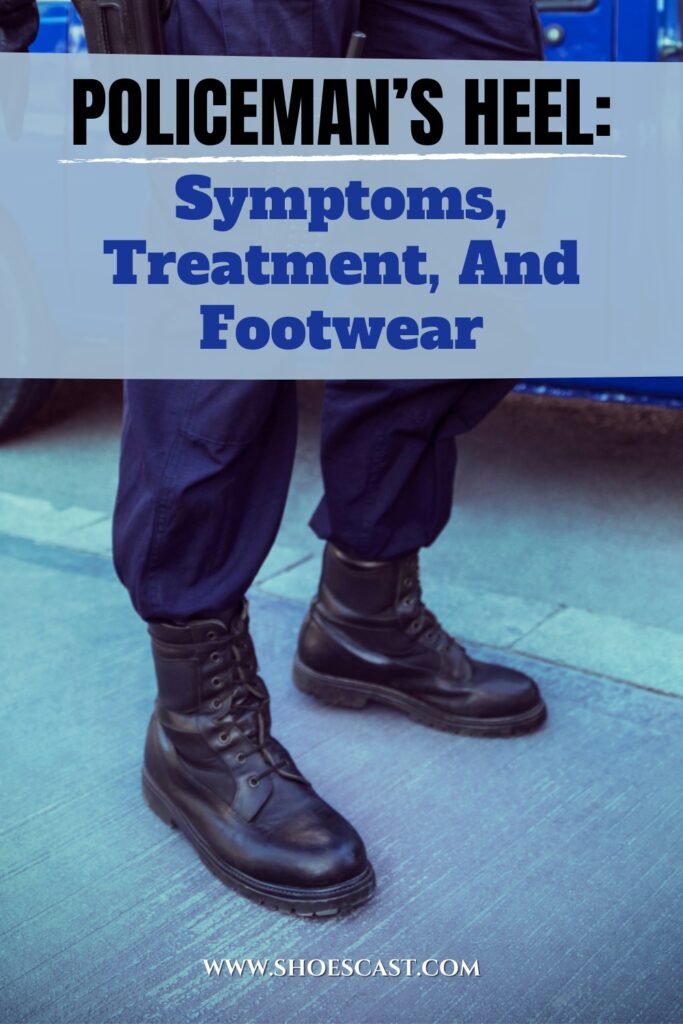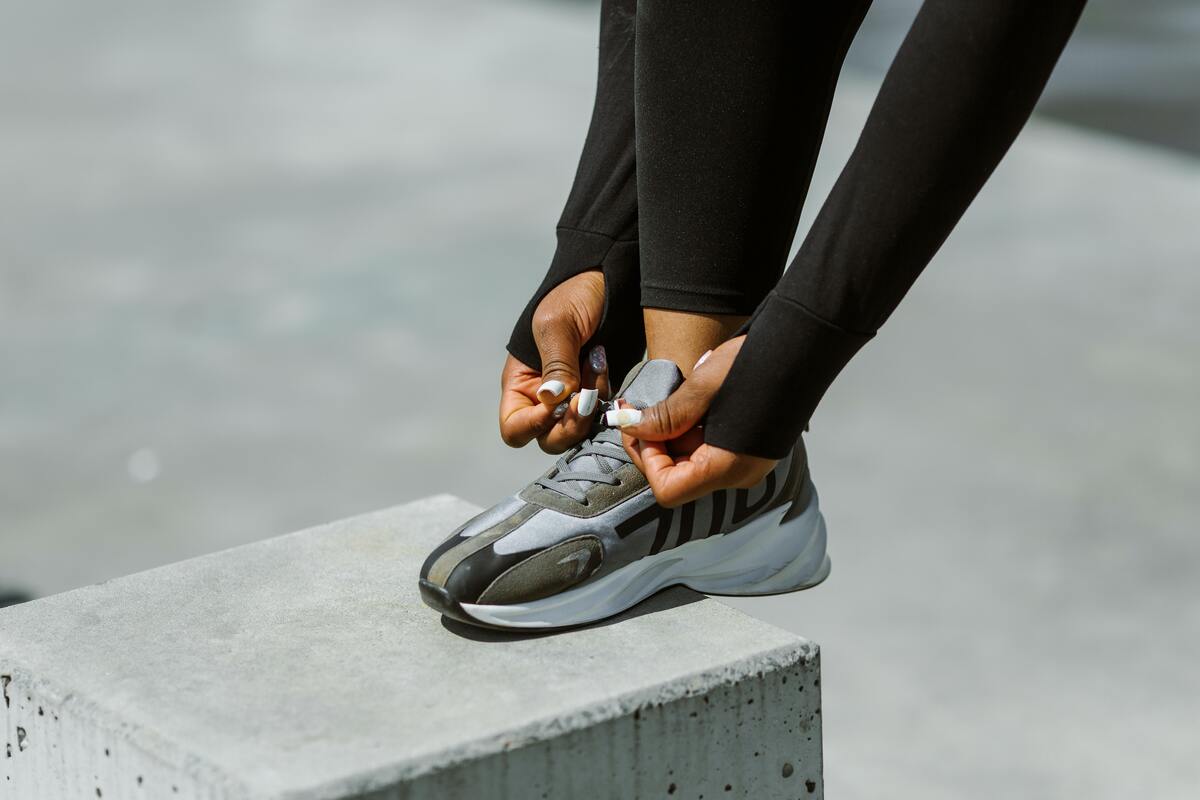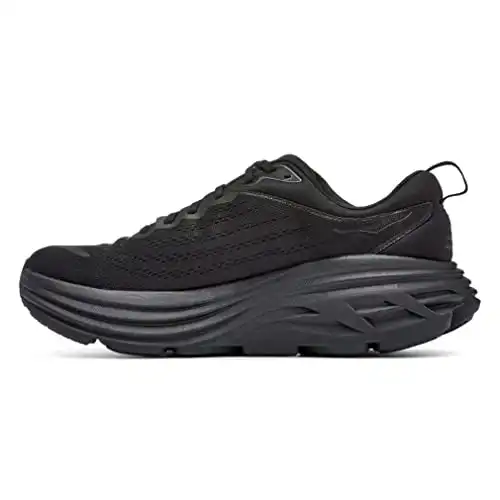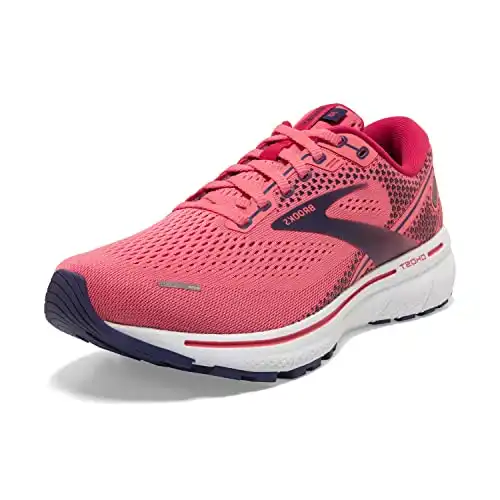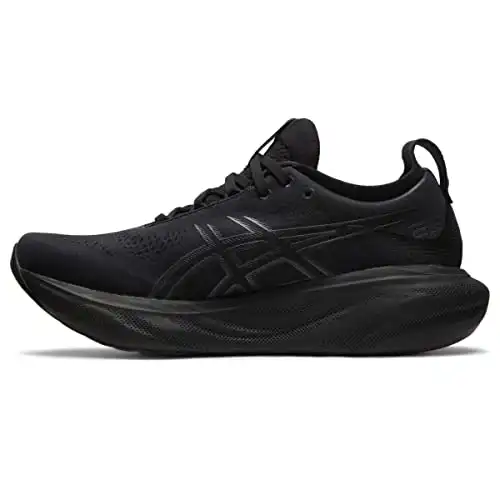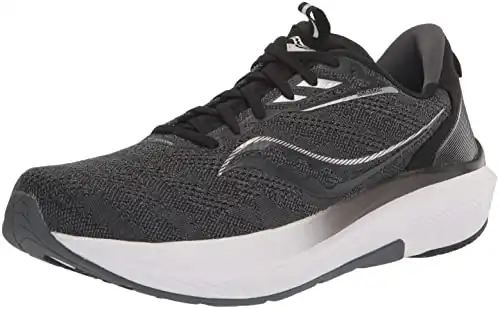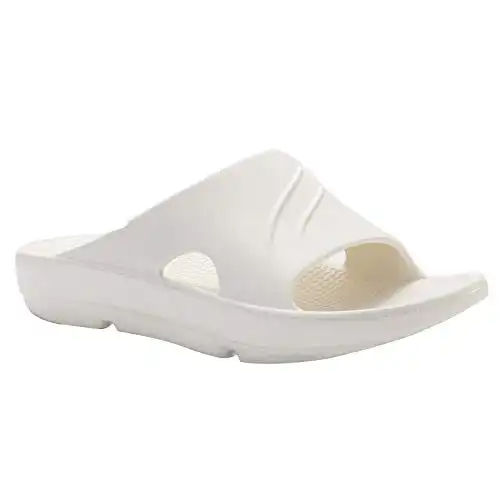Nothing can dampen your day of walking around the neighborhood, sipping on your favorite Starbucks coffee, and minding your own business as much as getting a stabbing sensation on the bottom of your foot – what on Earth could that be?! A condition known as Policeman’s heel might be the one to blame!
Now, you don’t have to be an officer of the law to experience the symptoms that come with such an aggravating condition.
Not to mention that you’ve probably heard of the condition under a different name – Policeman’s heel, Jogger’s heel, Tennis heel, and Plantar Fasciitis refer to the same condition!
Whatever the right name might be, there’s no denying that Policeman’s heel affects people who aren’t police officers, too.
Whether you spend most of the time standing on your feet due to work or lead an active lifestyle with lots of walking, running, and working out, you might start to experience symptoms of Policeman’s heel.
To make matters even worse, the annoying condition oftentimes becomes chronic because people refuse to undergo proper treatment. With proper treatment or preventative measures, though, you can keep Policeman’s heel at bay. More on that down below!
What is Policeman’s heel?
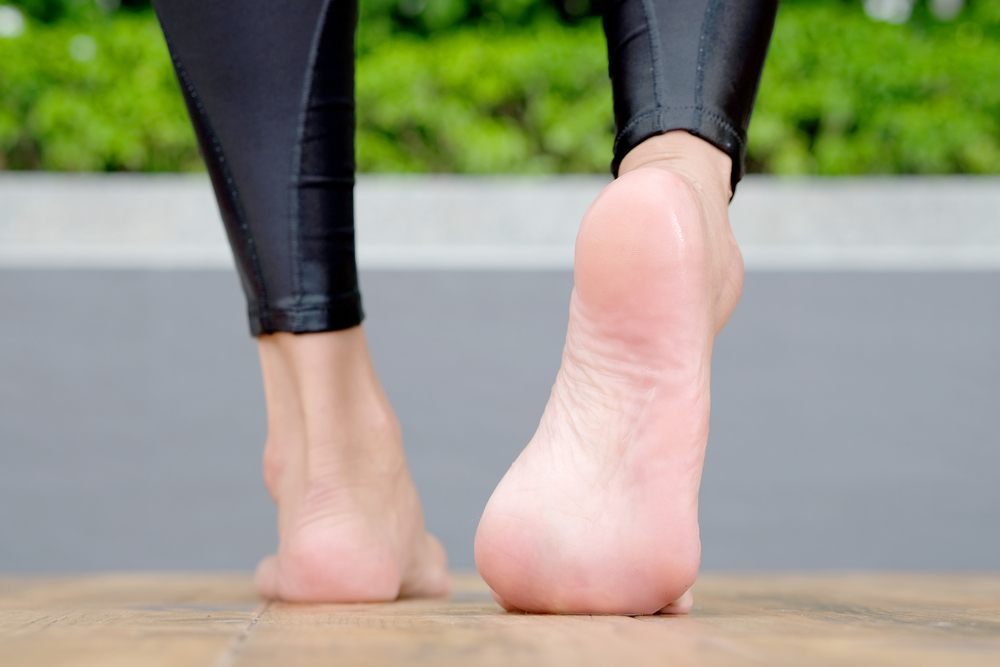
You’re likely experiencing the odd stabbing pain on the bottom of your foot, struggling to walk because your heel feels tender. You may even be limping at times because the level of the pain you’re feeling fluctuates. If that’s the case, chances are, you’re suffering from Policeman’s heel.
On one hand, Policeman’s heel occurs when you put too much pressure on the bottom of your foot when you’re walking, running, or working out.
Over time, that connective tissue stretches out, gets damaged and torn, and causes inflammation and irritation. Of course, when the problem doesn’t get treated, you end up developing Policeman’s heel.
On the other hand, this condition can occur even when you don’t lead an active lifestyle – per se. When you spend most of the time standing on your feet, you put almost the same amount of pressure on the bottom of your foot that you would when you’re walking, running, and working out.
Nobody’s safe from the police officer’s worst nightmare – except for people who play the preventative game, wear proper footwear, and schedule regular massages.
Now, before we move on to the best footwear for preventative measures, we do need to explore the condition further on.
1. Symptoms
We know what you’re thinking. With the constant pressure and pain on the bottom of your foot, you could be suffering from a myriad of conditions. When you’re unsure of whether or not you should be worried about a foot problem, we recommend scheduling an appointment with a podiatrist.
Other than that, you can check whether you’re experiencing some of the other symptoms that come with Policeman’s heel.
Heel pain and pressure, pain around the arch of your foot, swelling around the heel of your foot, a tight Achilles tendon, stiffness, and difficulty walking are dead giveaways.
Hence, you need to schedule an appointment with a podiatrist ASAP and start a treatment that’s going to ensure that the damage doesn’t become permanent. We do need to mention that the pain that comes with Policeman’s heel develops gradually over time.
When you notice that your pain’s getting worse and worse, hurry up and get your foot checked by a professional. Some DIY treatments are useful, but you might need prescription medication and physical therapy to get better.
2. Causes
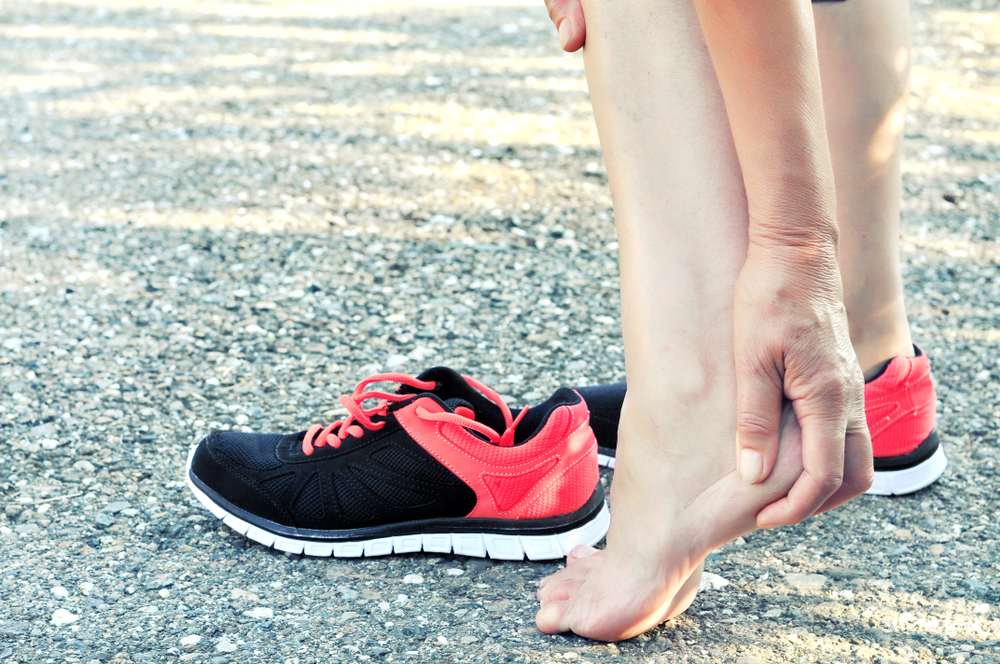
What are the causes of the condition, though? When you spend hours and hours standing on your feet, walking, running, or working out, there’s a chance you’re overstretching and overusing the connective tissue we mentioned beforehand.
While some sources argue that heel spurs cause Policeman’s heel, that’s not always the case.
We can’t forget that some structures of the foot tend to be more prone to foot problems and Policeman’s heel than others. Also, as we already mentioned, certain lifestyles and life choices affect the development of the condition, too.
Overweight and obese people, for example, suffer from foot problems because of the higher pressure on plantar fascia ligaments that causes them to tear. Runners, cyclers, and people who lead an active lifestyle are likely to damage and tear the plantar fascia ligaments, too.
People who suffer from high arches, flat feet, or tight Achilles tendons are up there, as well.
Whether or not you’re one of the people with a higher chance of developing Policeman’s heel, we do urge you to schedule an appointment with a podiatrist the moment you start experiencing the symptoms we mentioned beforehand. Better safe than sorry, right?
3. Treatment
Depending on the severity of the condition, there are different treatments you might need to undergo once you’re diagnosed with Policeman’s heel.
First off, your doctor might suggest you take a few days off, rest, and ice the area that’s tender and sore. Furthermore, you might need to use a brace and take anti-inflammatory drugs to ease the pressure and pain.
On the off chance that these things don’t work, you might need to consider nonsurgical and surgical options, too. Physical therapy, shock wave therapy, and stretching exercises are the most common nonsurgical options your doctor might recommend.
Gastrocnemius recession and plantar fascia release are the surgical options, but they’re not as common as you’d think. They’re only recommended when the pain becomes unbearable and otherwise untreatable. At the end of the day, suffering from Policeman’s heel affects the quality of your life.
And, as you might have guessed, that’s why you need to pay attention to a few tips and tricks to prevent Policeman’s heel from developing in the first place.
What’s the best way to prevent getting Policeman’s heel?
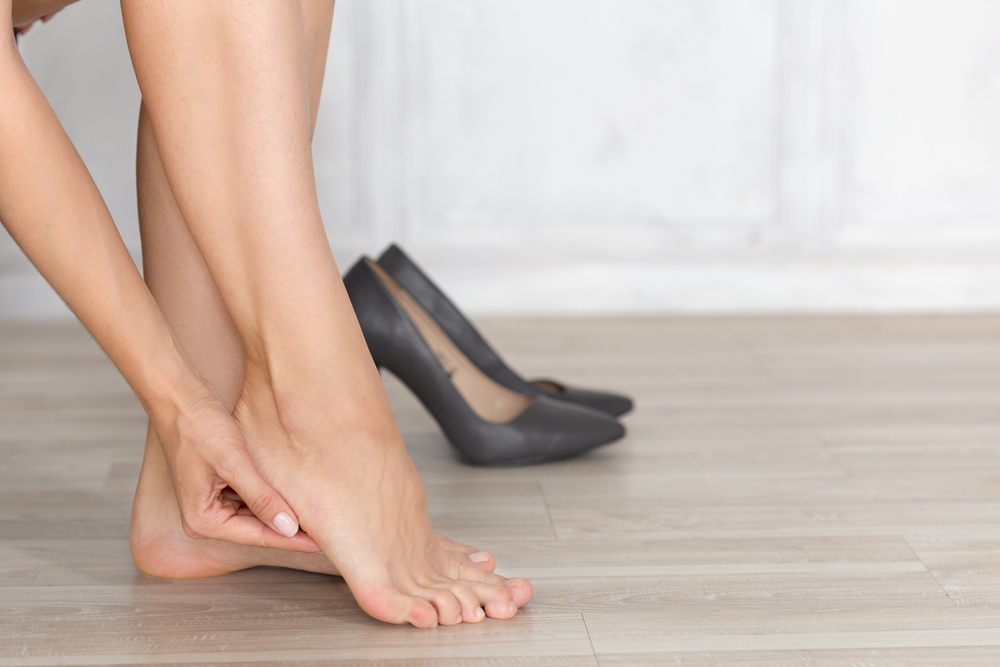
Great news – making a lifestyle change or two should do the trick!
One of the best ways to ensure you don’t end up developing debilitating pain on the bottom of your foot would be to wear supportive, protective footwear. Opt for sneakers or slides with proper arch and ankle support, padding for heel protection, and flexible fabrics for comfort.
Replace your athletic footwear regularly, every 400 to 500 miles, to ensure you’re getting the right amount of support, too. Other than that, maintain a healthy weight to reduce the amount of pressure you put on your feet when you’re walking, running, or working out.
Stretch before your workouts and don’t shy away from massaging your feet before and after working out – you’d be surprised at the world of difference that massages make.
What’s the best footwear for Policeman’s heel?
1. Hoka Bondi 8
Who wouldn’t want to wear these chubby, chunky beauties?
Hoka Bondi 8 sneakers are what dreams are made of – whether you’re suffering from Policeman’s heel or on the hunt for the perfect pair of sneakers to wear when you’re running or working out. We’d go as far as to argue you can even get away with wearing them to work – they’re that cute.
But, we can’t forget that they’re super supportive around the arches, padded for comfort, wide for feet that aren’t narrow, and lightweight. Before you spend your money on overpriced sneakers that don’t do anything for your feet, check out the Hoka Bondi 8 ones.
2. Brooks Ghost 14
OK, the Brooks Ghost 14 sneakers earned the APMA Seal of Acceptance for a reason.
Right off the bat, they’re perfect for people who suffer from flat feet because they’re supportive and stable, and equipped with ultimate arch and ankle support.
Moreover, they’re made with a wide toe box, flexible fabrics, and a mesh upper to ensure you’re comfortable throughout the day. With plenty of padding, they’re one of the most comfortable sneakers for people who suffer from Policeman’s heel on the market at the moment.
Run or walk down to get them!
3. Asics Gel-Nimbus 25
When you’re thinking of hitting the road for a run, you might want to walk back to the shop and get your hands on the Asics Gel-Nimbus 25 sneakers beforehand.
From the moment you put these sneakers on, you’re going to understand what we’re talking about – they’re made with a comfy, cushioned heel, a supportive frame, and flexible fabric for the most fastidious of runners.
Fear nothing when you’re wearing these sneakers because they’re designed for people who suffer from foot problems such as Policeman’s heel. Your troubles are taken care of with the Asics Gel-Nimbus 25 sneakers.
4. Saucony Echelon 9
Wondering what the most supportive sneakers you can get your hands are? Wonder no more because the Saucony Echelon 9 sneakers are promoted as one of the brand’s “comfort shoes” you can wear when you’re recovering from conditions such as plantar fasciitis, plantar plate tear, or even sesamoiditis.
With a thick foam footbed and a snug midfoot, these sneakers promise to get you through the day without the stabbing pain and pressure you normally feel.
5. Kocota Recovery Slides
We can’t forget about the type of footwear you can turn to when you’re overheating or getting tired of sneakers – the Kocota Recovery Slides are the perfect fit for you.
While your feet do get more support from sneakers, there’s nothing wrong with wearing chunky, foamy slides now and then. So, what are you waiting for?!
